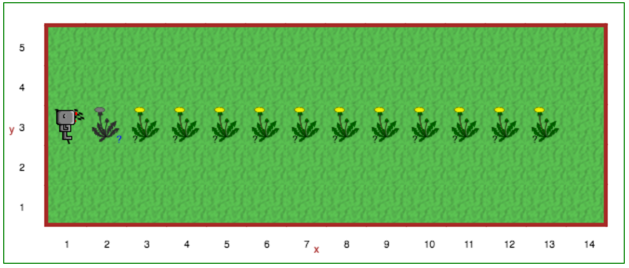Step 9: Repeating Instructions¶
CS20-CP1 Apply various problem-solving strategies to solve programming problems throughout Computer Science 20.
CS20-CP2 Use common coding techniques to enhance code elegance and troubleshoot errors throughout Computer Science 20.
CS20-FP2 Investigate how control structures affect program flow.
Tutorial¶
Often, we will find that we want to repeat a series of instructions a fixed number of times. For example, in Step 8, you had to tell Reeborg to do the same thing over and over again. Instead of writing the same code over and over, you can use the repeat block. For example, instead of this:
move()
move()
move()
move()
move()
move()
move()
move()
You could instead just write this:
repeat 8:
move()
A loop is a block of instructions that is repeated. Each time the loop is repeated is called an iteration, so the code below would have 4 iterations.
The following code will make Reeborg trace a square:
repeat 4:
move()
turn_left()
By using repeat, we can rewrite some function definitions without
having to repeat instructions:
def turn_right():
repeat 3:
turn_left()
You might want to adjust the code that you have saved in the library tab to use the repeat block.
For educators
Using repeat will not work in Python programs meant to be run outside of Reeborg’s World. The rationale for having repeat as an addition to Python’s for loop is to avoid having to introduce 4 concepts at the same time (loops, variables as in _ in for _ in range(n), builtin functions like range as well as the concept of function arguments).
Your Turn¶
Open Step 9 on the Reeborg environment.

Adjust the solution you created for Step 8, this time making use of at least two repeat loops. The world doesn’t change from Step 8, but your solution should be much nicer. Remember to use comments and whitespace to increase the readability of your solution!
repeat, if, def